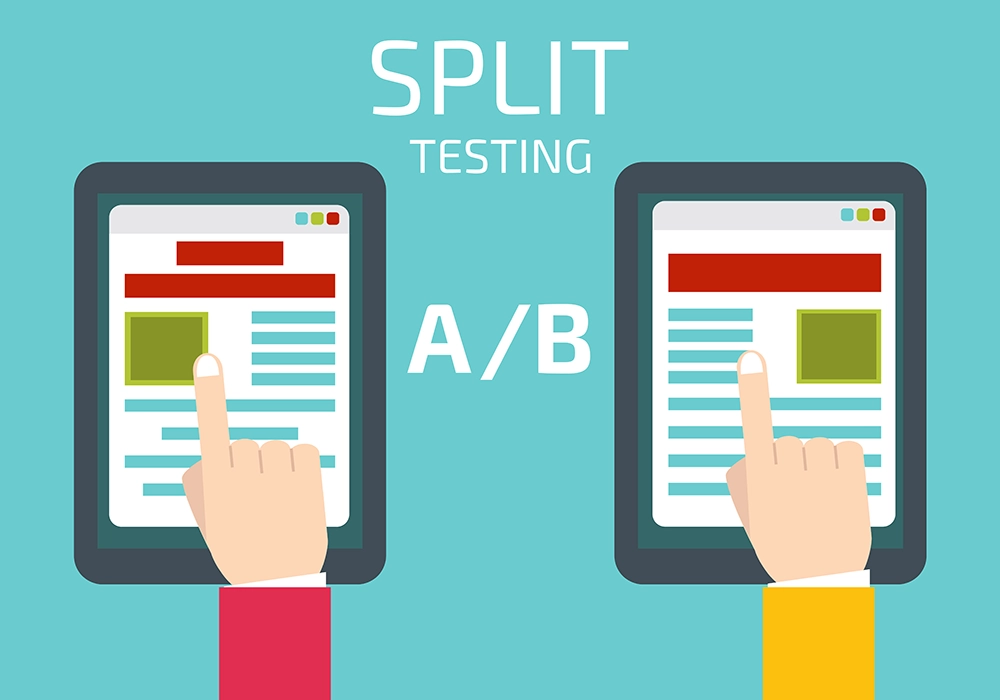What is Social Proof, and Why is it Important?
Social proof describes the psychological and social phenomenon where people copy the actions of others in an attempt to reflect correct behavior for a given situation. Psychologist Robert Cialdini coined this concept as one of his “6 Principles of Persuasion.”
According to a study by Harvard Business Review, the impact of social proof on people’s behavior is due to two underlying social influences:
- Informational influence – people view the behaviors of others as evidence of reality. We assume information from others, especially from review sites, is correct.
- Normative influence – people conform to be liked and accepted by others. We look to what others do to avoid deviating from the norm.
That’s why social proof is so powerful in marketing – it taps into fundamental human motivations of trust, credibility, popularity, and belonging.
Sprout Social uses social proof: “66% of consumers now look to social networks to inform their buying decisions.” When a business can leverage user reviews, testimonials, expert endorsements, and sharing/usage stats as social proof, it builds authority and trust in a product/service, which drives conversions.
“The principle of social proof states that one means we use to determine what is correct is to find out what other people think is correct.” – Robert Cialdini.

Some examples of social proof that businesses use in their marketing include:
- Testimonials
- Customer reviews
- Case studies
- Expert endorsements
- Media Mentions
- Celebrity influencers
- User-generated content on review sites provides reliable social proof for your potential customers. On-review sites provide reliable social proof for your potential customers.
- Badges and certifications
- Follower counts on social media
- Views, likes, and shares on content
Key Takeaways:
- Social proof refers to the phenomenon where people copy the actions of others in an attempt to reflect correct behavior for a given situation.
- There are many different types of social proof, including expert social proof, user social proof, celebrity social proof, and more.
- Incorporating social proof into your marketing can help build trust, increase conversions, and encourage visitors to take action.
- Testimonials, customer reviews, case studies, influencer endorsements, and social media shares are all powerful forms of social proof.
- The best social proof aligns with your target audience and communication channels to feel authentic and relevant.
18 Strategies To Use Social Proof in Marketing
Here are the top tips for leveraging different forms of social proof across your digital marketing to influence customer behavior and purchase decisions:
1. Feature Testimonials Prominently

Testimonial videos, photos, quotes, or reviews from satisfied customers are highly influential social proof assets you should feature prominently on your:
- Website (especially homepage & product pages)
- Email newsletters
- Paid ads
- Sales collateral
Keep testimonials prominent, genuine, and relevant to what matters most to your audience.
2. Curate Influencer Endorsements

Influencer marketing leverages recommendation and endorsement by personalities with an engaged social media following in your niche.
Strategically choose which influencers to collaborate with and what types of endorsements they can provide:
- Sponsored posts
- Product reviews can serve as social proof. They make your business more trustworthy as potential customers are likelier to trust peers who have used your products and services.
- Co-branded content or products
- Promotional discounts to their followers
Micro-influencers with more minor, targeted audiences can provide authentic and budget-friendly options to showcase your brand to the right people.
3. Publish Case Studies

In-depth case studies and success stories explain how customers have used your product or service and the results/ROI they achieved.
Adequate customer case studies follow a compelling before-after narrative arch:
- Outline the customer’s problem/situation before using your product, as people are more likely to trust real experiences.
- Please explain how your product solved their problem
- Quantify the results, outcomes, and ROI achieved since using your product
4. Prompt for Reviews

Actively collect ratings, reviews, testimonials, and customer stories to feature as social proof. Prompt for reviews:
- After purchases (via email or in product)
- With a dedicated space on your website for customer testimonials, you can provide social proof that your products and services are trustworthy.
- As incentives for future discounts
Feature excerpts from positive reviews prominently across your marketing.
5. Display Certifications and Badges

Relevant badges, certifications, and accreditations from recognized institutions and expert reviewers boost perceived quality and trustworthiness.
Examples include:
- Awards/quality certifications
- Expert media publications and reviews
- Trust symbols like Norton Secured, BBB, TRUSTe
- TrustPulse reviews
- Eco badges, “Made in X” etc.
Prominently display certifications, badges, and media logos in footer navigation, overlaid on product pages, paid ads, etc.
6. Share User-Generated Content

User-generated content (UGC) like customer photos, videos, reviews, and testimonials shows real people authentically using your product.
Source and re-share UGC as social media updates and in dedicated website sections like:
- Photo gallery of customers using your product
- Video testimonial reel
- Blog post roundups of customer reviews
Always link back and tag users who created content. Seek customers’ consent before featuring their content in your marketing.
7. Leverage Follower Counts
Your follower counts, and community growth on social media platforms also signal your business’ authority, credibility, and community support to site visitors.
Strategically showcase your brand’s cumulative followers and engagement rates across platforms like Facebook, Instagram, Twitter, LinkedIn, YouTube, etc. Promote these customer testimonials of your marketing campaign in your website footer, landing pages, ads, etc..
8. Display Social Share Counts

The number of social shares, likes, pins, views etc. on your content also signals that others find it valuable.
Prominently display cumulative counts of:
- Social shares per blog post/resource
- Video views
- Reviews and ratings per product
- Photo gallery views
These signal social validation of your content quality and ideas to visitors.
9. Host Popularity Contests
Contests that tally up votes and submissions from your audience can create a viral social effect that showcases your product’s user interest and adoption.
Some ideas:
- “Vote for your favorite product feature.”
- “Submit a testimonial for a chance to win.”
- “Refer a friend contest.”
Feature ongoing vote tallies and leaderboards on contest landing pages. Share user submissions and customer testimonials received.
10. Provide Usage Statistics

Hard stats on customer signups, product usage, page visitors etc., make adoption metrics more tangible for visitors:
“Join over 5 million users worldwide who use our products and services – a powerful example of social proof.”
“Viewed by over 2 million visitors last month.”
These create a social proof of scale and establish your product as an accepted norm.
11. Feature Press and Media
Earned media coverage and features on trusted publications establish 3rd party credibility and endorsement:
- Badges of media publications that covered your brand
- Pullquotes from positive press coverage
- Guest articles contributors have written
Link to full press articles so visitors can read more details and context.
12. Add Social Share Buttons
Make it easy for visitors to share your content on their networks. Include social media share buttons for:
- Blog posts
- Resources
- Videos
- Product pages
This drives shares as organic social proof. Track content performance to double down on what receives the most shares.
13. Spotlight Noteworthy Partners
Strategic partnerships, integrations, or customers can lend their credibility to give your brand a rub.
Showcase logos of noteworthy brands you have partnered or integrated with; this provides social proof that your products and services are trustworthy.
They tastefully named big brand customers (with their permission) as social proof of choice.
14. Display Popularity Metrics

On e-commerce product pages, display best-selling badges or metrics like:
- Units sold
- Total orders
- Conversion rate
- Sales velocity
For content, show pageview metrics and reading time. These signals to visitors what others commonly engage with.
15. Leverage FOMO

FOMO (fear of missing out) creates urgency among potential customers to join others using your product.
FOMO tactics include:
- Limited-time discounts or trials
- Uptime monitoring badges
- Real-time purchase notifications
Highlight positive experiences others are having that visitors could miss out on.
16. Feature On-site Activity
Showcase real-time user activity on your platform:
- Current users online
- Recently viewed products
- Popular searches
- Live visitor/user counter
- Populating community feeds
This makes adoption momentum tangible to visitors exploring your brand.
17. Add Social Validation

Design elements that visually signal trust and credibility:
- 5-star ratings
- Seals of approval
- Badges and trust symbols
Visually reinforce the most compelling stats and testimonials.
18. A/B Test Social Proofs

Continuously test different social proof formats and placement on crucial landing pages:
- Long-form quotes vs short pull quotes
- Testimonials vs expert reviews
- Top/middle/bottom placement
- Text, visuals, icons
Track conversions to discover which social proof variants connect most with your audience to drive action.
FAQs
Q: What types of social proof work best?
A: The best type of social proof depends on your audience, industry and business model. Testimonials, reviews and case studies tend to work universally across most verticals. Metrics like sales data, usage stats and followers also work for ecommerce and SaaS specifically. Identify 2-3 types of social proof that would be seen as most authentic and relevant by your audience. Feature these customer testimonials consistently across channels.
Q: Where should I display social proof for my products and services on my website?
A: The most effective places to display social proofs are on your homepage, product pages, pricing pages, checkout flows and landing pages. These pages attract visitors looking to learn more or at decision-making junctures where social proof builds trust. Test adding social proof elements like testimonials, reviews, certifications and stats prominently above the page fold in the header and sidebar sections.
Q: How much social proof is too much?
A: Avoid going overboard flooding every page with social proofs. Stick to 1-2 strong, compelling examples per page. Curate a diversity of proof sources over time rather than listing the same ones repeatedly. Stay on-brand with tone and engagement vs hard selling. Make display of social proofs feel natural integrated into content rather than disruptive or promotional.
Q: How can I source great social proof content?
A: Proactively collecting testimonials, reviews, referrals and UGC makes curating authentic social proof much easier. Dedicate a space on your site requesting reviews. Email customers asking for testimonials. Run referral programs incentivizing shares. Make it easy for followers to tag you in social content. Also search brand mentions to discover UGC. Consent and attribute all content sourced externally.
Q: How do I feature social proof across ad campaigns?
A: In paid ads, strongly resonating stats and testimonials can boost conversions. For search/display ads, test featuring 3-5 star reviews, rating score badges or short impactful quotes. For paid social ads, use UGC like customer photos or videos. Pull most compelling stats to feature prominently within minimal required ad text limits.
In Closing
Implementing the right social proof strategy tailored to your audience can pay dividends through building authority, trust and conversions over time. Test different formats, placement and social proof sources across channels to influence visitors at key micro-moments. Stay authentic, ethical and track performance to double down on what moves the needle most.




Leave a Reply